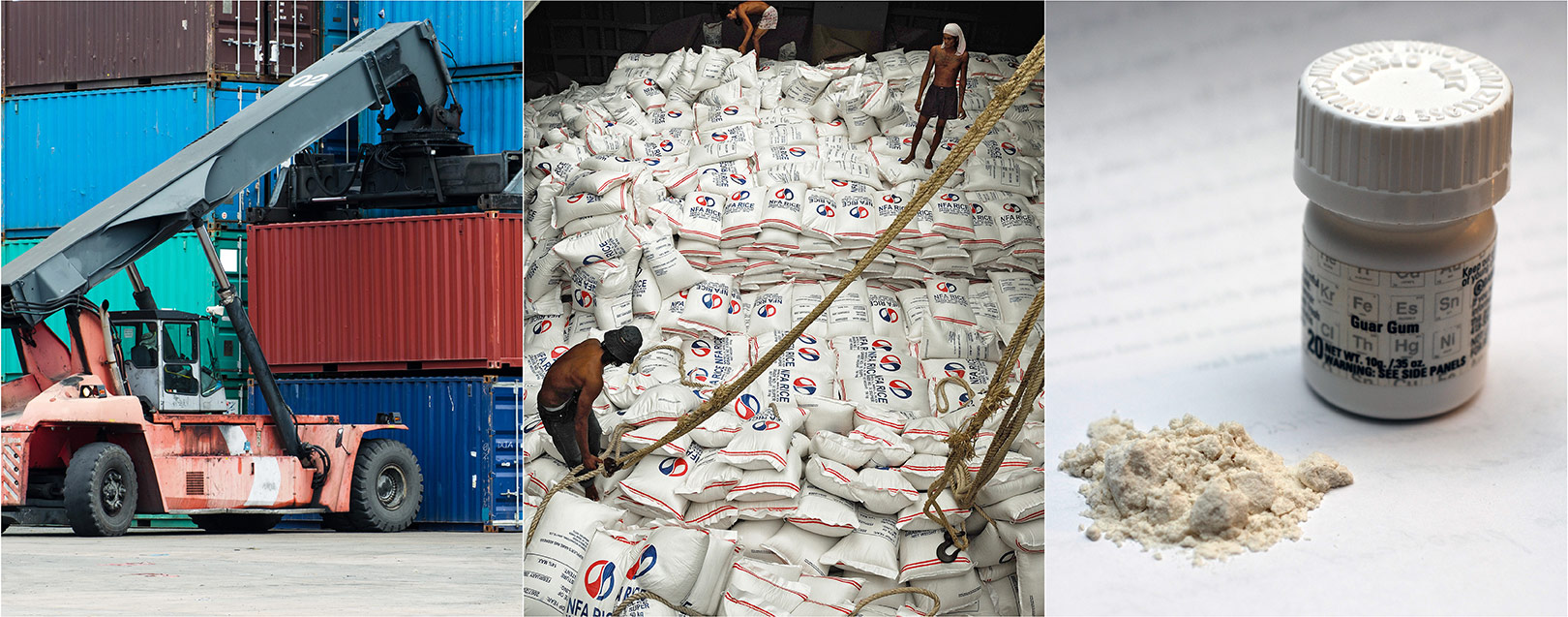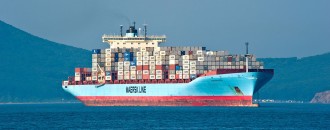
Direct Port Delivery: To whose advantage?
By Abin Daya
The Government is working to improve the ‘ease of doing business’ ranking of the country, and one of the areas of focus is the time it takes for manufacturers to get their imported raw materials and components, out of the port and into their factories. The numbers are not very encouraging, and it currently takes about 9-10 days to get a container out of the port and on its way to the manufacturer. With a view to improving this, the Direct Port Delivery arrangement was started in 2016. How is it faring? Please read on in this week’s update.
The most important story of this week, definitely, is the 25 bps cut that the Monetary Policy Committee permitted on the policy rates. The unified voice cracked this time, with 4 members voting for a 25 bps cut, one member calling for a 50 bps cut, while the last member preferring to hold rates. However, the policy stance is neutral as the committee foresees upside risks to inflation, caused by the firming up of commodity prices.
The last item this week is India’s performance in export of agricultural products. Rice has saved the day, literally, pulling up export figures to achieve a 10% growth in values.
Direct port delivery arrangement
- Import of cargo in containers is typically done through the Container Freight Stations (CFS), where the containers are stored, due to the space constraints at the port themselves
- Containers are moved to the CFS and customs clearance is carried out here, with a view to decongest the ports
- Ports like Jawaharlal Nehru Port Trust, Mumbai (JNPT) which handle large container volumes operate on the CFS model, and millions of dollars’ worth of investment has been brought in by players who build and operate these stations
- However, the CFS is also seen as a major bottleneck in the import clearance timelines, with the average dwell time being about 9-10 days at the Freight Stations
- One reason for this is that importers use the CFS as the preferred mode of storing containers, and clear them based on their inventory requirements, based on their cash-flow to pay customs duties
- With a view to improving the ‘ease of business’ rankings of the country, the government is now promoting the Direct Port Delivery (DPD) model, initially at the JNPT, and now at the Chennai port
- Direct Port Delivery is the facility provided to importers to take delivery of the containers directly from the port terminals, and transport them to the factories without moving them to a CFS
- JNPT started allowing its ACP clients to take delivery of cargo directly at the port instead of the CFS in Feb 2016
- Accredited Clients Program (ACP) is an initiative by the CBEC launched in 2005 to promote voluntary compliance amongst importer clients. Under the same, importers who are assessed as highly compliant and who satisfy a set of eligibility criteria can apply for enrolment under ACP. ACP clients enjoy assured self-assessment in respect of imports, for duty assessment and clearance of cargo, leading to shorter turn around time (TATs)
- The dwell period for goods cleared under the DPD program was seen at 1.5 days, instead of the 9-10 days which was typical of the CFSs
- However, till Dec last year, only about 4% of clients had opted for DPD, which has improved to 15% due to the awareness programs initiated by the government
- DPD was launched at the Chennai port in Sep 2016, and as of June 2017, almost 19% of all cargo cleared has been under this route
- The government is aggressively pushing for 40% of cargo to be cleared under DPD; but is it really that simple?
- CFSs argue that the high dwell times are not of their making, and if required, they can push out cargo quickly
- 25% of cargo gets moved out in two days, and about 35% in the next five days, thus clearing 60% of cargo in about a week’s time
- Rest of the cargo remains at the CFS for a longer duration as importers see this as a cheaper option for storing their containers
- As mentioned above, there are millions of dollars of investment at stake for the CFSs, not to mention the lakhs of jobs at risk if these stations were to close down
- Importers, on the other hand, who are supposed to be the biggest beneficiaries, also do not seem to appreciate the benefit of the faster clearance
- One of the largest manufacturers of air conditioners in the country has the capacity to handle about 10-15 containers per day at their plant
- The company uses the CFS model as an extended inventory storage for their raw materials and components
- With DPD, the company needs to have the ability to handle all 50 containers which form part of one consignment for them
- Apart from that, it also brings to question, the availability of sufficient vehicles and the infrastructure capabilities required to move so many containers at one go
- Direct Port Delivery is the future of container clearing, considering how the industry operates the world over
- The implementation, though, needs to be well thought through, taking all the stakeholders along, rather than pushing through the changes
RBI cuts policy rates; will banks follow suit?
- The Monetary Policy Committee cut the repo rate by 25 basis points on Aug 02 to 6%, 10 months after it last cut the rates on Oct 04, 2016
- Consumer inflation slowing down to 1.54% in June, and IIP growth decelerating to 1.7% in May had made the cut a much-expected affair
- However, RBI has maintained its policy stance neutral due to the upside risks it perceives for inflation from higher food prices and sticky core inflation
- The reverse repo rate fell by 25 basis points to 5.75%, to maintain the gap at 25 basis points

- The gap between repo rate and reverse repo rate had been maintained at 1% for a pretty longish period, from Sep 2010 to Apr 2016
- In Apr 2016, RBI increased the reverse repo rate from 5.75% to 6%, while dropping the repo rate from 6.75% to 6.50%
- The gap further narrowed to 25 bps in Apr this year, with repo at 6.25% and reverse repo increasing from 5.75% to 6%; this looks to be the new normal
- While policy rates have fallen during the current easing cycle, the transmission by banks has been less than satisfactory, at least till the early part of 2017
- One reason for this is that banks typically source less than 1% of their funds from RBI at the repo rate
- Bulk of the source of funds used for lending is from the deposits, particularly, long-term bulk deposits, which have been contracted at a higher rate
- Hence, transmission of rate cuts always happens with a lag, as it takes time for bank to acquire deposits at the lower rates
- This is also the reason why the deposit rates fall at a much faster rate than lending rates
- Again, the impact of lower lending rates is easily felt by the new borrowers, rather than the existing ones
- Even here, loans linked to base rates have lost out, as banks have revised their MCLR more frequently than the base rate
- From the early part of this calendar year, most banks have dropped their lending rates and MCLR, following the lead set by SBI
- This was also facilitated by the significant growth in deposits which came in post demonetisation

- Credit growth, which was at 9.7% as of Aug 19, 2016 dropped to 7% as on Nov 25, 2016, while deposit growth surged from 9.2% to 15.9% in the same period
- As on Mar 03, 2017 deposit growth had moderated to 12.7%, while credit growth had fallen to a low of 4.8%
- RBI data shows that deposit growth has further slowed down to 10.4% as on Jul 21, 2017 while growth in non-food credit has improved to 7%
- Thus, the availability of surplus liquidity in the system, which had enabled banks to bring down deposit rates, and consequently the MCLR, sharply during the early part of the year, has now come down to more realistic levels
- Transmission of the rate cuts, from here-onwards, could be slower, and applicable more for fresh lendings rather than existing loans
Agri product exports increase by 10% during Apr-June
- India’s agri exports rose by 9.7% y-o-y in USD terms, during the first quarter of the financial year, driven by strong growth in Basmati rice exports and Guargum exports

- Of all the product groups, export of cereals grew fastest from $1.69Bn to $2.03Bn, an increase of 20.5%, followed by floriculture & seeds at 11.4%
- The growth in cereals was helped by a 5.8% growth in volumes and 35.7% growth in US$ value of Basmati exports, a commodity which enjoys almost 29% share of all agri product exports
- Recoveries per ton for Basmati rice increased from $787 to $1009, a growth of 28% y-o-y
- The below chart shows the y-o-y change in volume and value of exports for the top 5 commodities

- Exports for the second largest contributing commodity, Buffalo Meat, remained flat, dropping marginally in volume terms
- However, a 3.2% increase in per ton recovery, helped to record a marginal increase in export values for the commodity
- Exports of Guargum, which accounts for 4.15% share in all agri product exports, recorded the highest growth in both volume and values, thus helping push up overall exports

Abin Daya the author of 'Basics of Trade: An India Perspective' is a FEMA expert, a career transaction banker, with close to 15 years of experience in corporate and transaction banking, in India.







 to success.
to success.